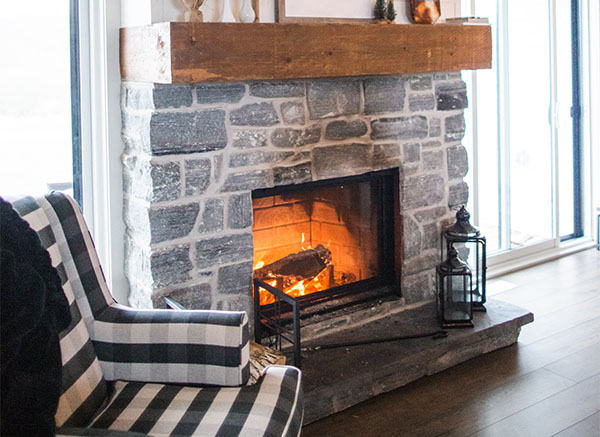Fireplaces, whether wood burning or gas, offer homeowners a warm haven during cooler seasons. Understanding proper safety and operating procedures is important for any homeowner with a fireplace. Families with children are often concerned about the possibility of accidental burns and increased fire hazard. No need to fear. In this article, we will share safety and care tips for wood burning and gas fireplaces to help you enjoy this feature of your home comfortably and safely. We’ll also point out when it’s important to hire a qualified technician.
Gas Fireplace Safety
Gas appliances have some automatic safety features, but they still require good safety habits from you, the homeowner. Here are a few helpful safety tips for gas fireplace use.
- Always obtain and review your fireplace’s model information and manual so that you fully understand how to operate and maintain the appliance.
- Know exactly where the gas shutoff and control key are located, before operating the fireplace.
- For direct vent and B-vent fireplaces, practice operating the valve before the fireplace is used for the first time.
What to Inspect
Damper inspection is similar to that of a traditional wood burning fireplace. Direct vent and B-vent appliances do not have dampers, but still check the flue termination to look for bird or rodent nests or the buildup of spider webs. Debris from your lawn can also contribute to clogging the horizontal direct vent.
You can contact a local National Fireplace Institute (NFI) professional technician to inspect for leaking seals, loose gas fittings, dirty burners, or anything else that might affect the safety of your gas fireplace.
Wood Burning Fireplace Safety
The National Fire Protection Association recommends chimneys be swept at least once a year, at the beginning of winter, to remove soot and debris by a professional. Here are several safety items you can check yourself.
- Store wood away from your home’s foundation and bring in what you need to use in small batches.
- Choose the right woods: dense, hard woods such as oak should be split and stored in a high dry place for about six months. A mix of seasoned and more green wood is helpful to control how long your fire burns, but avoid soft woods such as pine. Pine can produce more creosote and eventually create a hazard.
- Clean ashes out regularly, ensure they are completely cool before dumping them or spreading outdoors.
- Use a metal-mesh screen or glass fireplace door to prevent hot embers from popping out of the fireplace onto flooring.
- Ensure young children are unable to reach hot surfaces or fireplace tools.
What to Inspect
Inspect your damper to ensure it is opening and closing properly. Check the flue for creosote buildup. Creosote is a chemical mass of carbon formed when wood, tar, or fossil fuels are burned. Creosote buildup is one of the many causes for chimney fires. Make sure a wire-mesh cap covers the top of the chimney to keep birds, squirrels, rain and other debris from entering and blocking the flue. Finally, as always, test your smoke alarms to be sure they are functioning properly.
Once a year, before you start using the fireplace, contact a professional to clean and inspect your flue, damper and fireplace.
When you understand how your fireplace works and use basic safety measures, you can enjoy a warm fireside with your family all winter.

